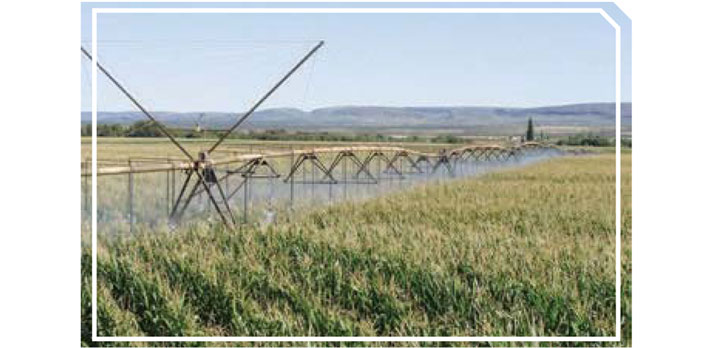
The climate and environment greatly influence the development and yield of maize. With production under irrigation we can manipulate some of the environmental and managerial variables to optimise production.
This information is provided to emphasise the critical production practices including efficiency and timing needed for optimum growth to achieve higher yields and profits.
Cultivation
- An even soil surface is an advantage.
- Excessive runoff can be a problem and is often due to a compaction layer.
- If the soils are prone to runoff, perform a ‘wet-rip’ before the V5 growth stage. It increases water infiltration and aeration – irrigate soon afterwards as plants can rapidly go into moisture stress.
Planting and plant population
The goal is uniform germination to minimise inter-plant competition. This is determined by the proper and efficient functioning of your planter. Ensure that it is set up and calibrated correctly before planting and monitor performance regularly throughout the planting process. The goal of planting is to obtain uniformity:
- Even soil seedbed, plant spacing, planting depth, soil contact, fertiliser placement and irrigation.
- Good contact between the seed, soil and moisture is a function of the planting depth and pressure wheel setting.
- Optimal germination will take place above 15°C.
- Formation of a crust and clods are unfavourable.
- Good weed control is critically important in the plant’s early development stages.
Fertilisation
- Check application regularly.
- Fertigation is effective.
- Avoid nutrient deficiencies at all times.
- Beware of a high salt index and fertiliser burn when band placing.
- Band placement improves early vigour.
Nitrogen
- For high yields, 280 - 350 kg N/ha is recommended.
- Apply ± 20% at planting.
- If application can be done through the irrigation system, the balance of the nitrogen can be applied as six topdressings depending on the soil type. The amount can be gradually increased as plants become more mature.
Recommended top-dressing timings
- After emergence, at about the three leaf stage.
- Five to six leaf stage.
- Ten to twelve leaf stage.
- Eighteen leaf stage.
- Tassel emergence.
- Just after flowering.
Water scheduling: Uniform application
- Check uniformity and physical delivery of the sprinkler package.
- Sprinkler lifetime is limited and should be checked at least every five years. Make sure the sprinkler package can supply enough water in the critical times.
- The most critical time is one week before pollination up to and completion of grain filling. Apply water at the right time and right amount/growth stage.
- Water application is a function of soil type, climate and root development.
- Check uniform wetting of the field.
- Irrigate until 80% of the husk leaves have turned brown.

Corrective management practices may be necessary under the following circumstances
- Heavy rainfall after planting and before emergence.
- Large variation between day and night temperatures.
- Low night temperatures.
- Strong winds.
- Crusting.
- Leaching of fertiliser.
Apply quality control regularly without exception.
